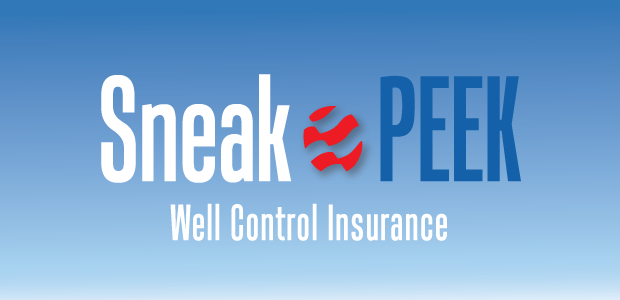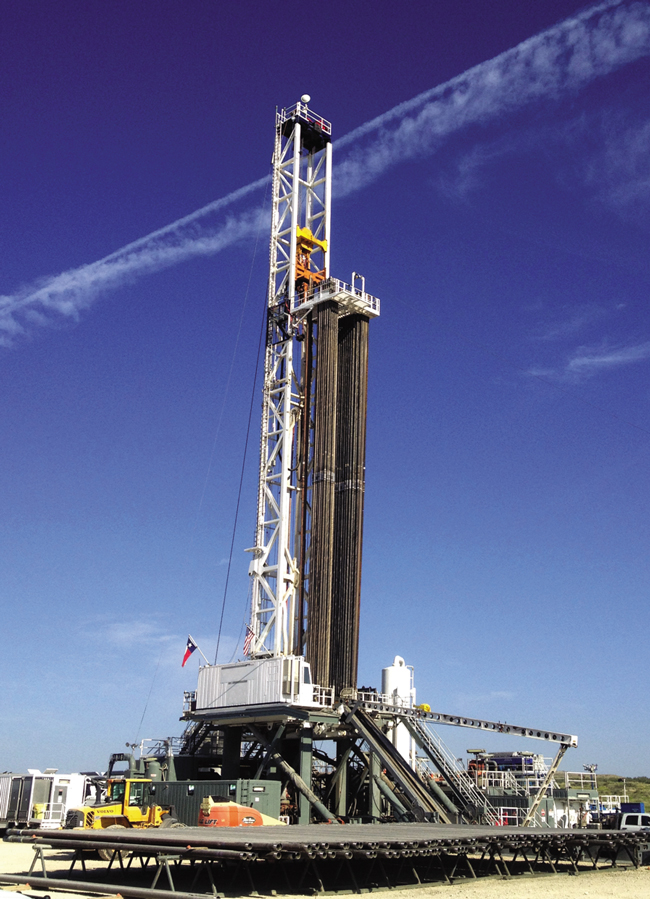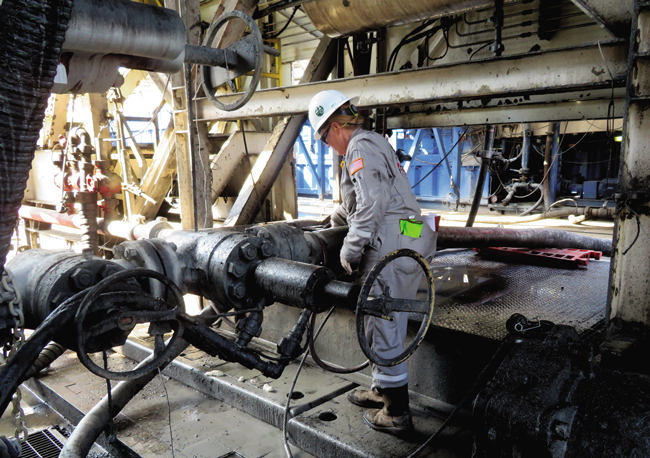
Increased Field Activity Underscores Importance Of Well Control, Insurance
By Danny Boyd, Special Correspondent
With drilling and completion work ramping up, companies in all segments of oil and gas hanging “help wanted” signs outside their front gates, and inflationary cost pressures intensifying across the board, the industry is approaching 2022 with renewed optimism tempered by the awareness that managing business risk is as important as ever.
Industry trends certainly point in the right direction, but increased activity equates to greater risk exposure; new hires mean unseasoned personnel on the well site; and higher costs translate to greater economic consequences if something goes wrong.
Well control specialists offer these bits of advice for operators and contractors: Train relentlessly and call early. The sooner the experts get involved, the lower the cost and impact of potential well control incidents. Oil and gas insurance experts have similar advice: Call often to make certain insurance programs are regularly reviewed and updated to keep pace as oil and gas activity levels change.
Biggest Risk
Cost pressures–especially margins on shale well development projects–may be a key determinant in whether managers pick up the phone at the first hint of trouble or try to work through a potential well control issue. Rick Burns, senior vice president at Amwins Program Underwriters, says there is a solution for operators that worry about spending unplanned capital outside the budgeted authorization for expenditure to drill and complete a well.
“We now have an incentive for them to call the well control expert: Underwriters will, up to a certain amount, pay for the response, so there is no initial cost impact to the customer,” Burns says. “Now, the burden is taken off his shoulders. The customer does not have that profitability issue weighing against the well control risk. This is fairly new, and it will be as standard as all insurance in the future. It is only a matter of time.”
Insurance prices are increasing across the board after years of market softness, annual rate reductions and abundant capacity. The impact of factors both within the industry and outside of it is expected to result in well control insurance costs rising 15%-25% in 2022.
Cost control is even more essential as insurance pricing ticks up after seven years of a soft market in which every renewal of operators and nonoperators included rate reductions, he says. Now capacity that was once overabundant on the insurance side has dwindled from the extended soft market and is compounded by lease operator mergers and acquisitions. These factors' impacts result in well control insurance costs rising 15%-25%, Burns says.
As market conditions change, insurers and well control specialists continue to look for ways to help operators and contractors mitigate risks, he adds. Under a new alliance agreement between Cudd Well Control and Amwins Program Underwriters, customers of the wholesale insurance broker, managing general agent and program underwriter have access to Cudd’s well control specialists, engineers and well intervention services under an arrangement that should speed communications and claims services, Burns says.
About 25 years ago, Burns and Bo Burris, Cudd’s well control alliance director, launched a program between Lloyds of London and Burris’s previous well control firm in one of the first arrangements of its kind in which the well control company agreed to provide engineering and risk management services to help prevent blowouts, Burris recalls.
Under the current arrangements, well control experts provide a menu of training, audit and additional risk management services designed to prevent a blowout or minimize the impact of one, he says.
Specialists can perform rig, frac spread, coil tubing and snubbing audits in which experts make trips to the field to examine equipment and processes with their representatives to help ensure functionality when needed, Burris says.
Cudd also offers well plan reviews, emergency response reviews, well control response plans and well site contingency training.
As activity increases, an influx of inexperienced workers poses the biggest well control risk, Burris suggests. “When you have a downturn and lose guys that have 35-40 years of experience, you have a gap,” he explains. “It happened in the 1980s downturn and two others in between. It is problematic and we are going through it again right now.”
In any environment, personnel are always the primary issue in well control and mitigation, especially now that more land, Shelf and deepwater rigs are going back to work, says Larry Nixon, senior technical advisor at Cudd Well Control.
“During this time, all the drilling, workover contractors and service companies are trying to respond to these needs, but the risk lies with people,” he continues. “You can have the best equipment, the best drill ships, best land rigs, but you have to have good quality, well-trained, experienced people.”
To help address training and preparedness, Cudd performs a crew awareness program that evaluates the drilling rig crew and helps contractors shore up training deficiencies. Cudd Well Control also has a well control certification school for intensive well control training and risk mitigation, with company operations overall supported by veteran company specialists and engineers who were trained by the likes of Bob Cudd, Joe Bowden Sr., Red Adair, Boots Hansen, and other industry notables, Nixon says.
In addition to mitigation, having sufficient insurance coverage is essential to helping operators manage well control incident costs, Burns advises. Policies have been consistent over the years and include three sections that cover the cost to control the well, the cost to re-drill or restore the well to its prior condition, and the cost from damages and cleanup of any seepage or pollution from the well, he says.
Despite consistent offerings, every operator needs to thoroughly examine the definition of a well out of control and the definition of an underground well out of control in any policy, Burns insists.
“Those are the two main coverage triggers,” he explains. “If you do not have an event that meets that definition of these triggers, you have no coverage for all three sections. It is paramount that operators look at the wording and get the broadest wording available there.”
Changes from the advent of unconventional upstream operations created the need for additional endorsements, including the multiple-well pad endorsement, Burns points out.
Multiwell pad drilling activities have brought additional risks. Well control contractors have helped build industry understanding of those risks through education and preparation for events, but dissemination of information about solutions and lessons learned needs attention, Nixon says.
“We do a great job in our industry, but we still need to work on informational sharing on well control events,” he assesses.
As well numbers on pads have increased to as many as 10, Cudd works to get with customers ahead of time to discuss things such as cellar design, cellar type, cellar depth and types of wellheads, all of which will affect the response and aspects of the resolutions, Nixon says. Familiarity with pad layout, wellheads and tree orientation can help prevent collateral and cascading escalation, Nixon remarks.
On multiwell pads, lessons learned include how to avoid having all casing valves facing one another, Burris says. About a decade ago, a well fire ignited six wells in a cascading effect because of the casing valve placement, he recalls.
In policies, multiwell pad endorsements were created to clarify coverage during incidents involving several wells on a pad, Burns points out. Wording changes can now specify that multiwell blowouts on a single pad are one occurrence, which demonstrates the need for higher limits and more coverage, he adds.
With work contracts typically spelling out whether operators or contractors are responsible for various types of coverage, gaps in coverage are not an issue but duplicated coverage by happenstance is, Burns says.
Best Practices
Operating companies can adopt best practices to mitigate risks in addition to well plan reviews on high-risk wells. Burris suggests having two qualified drilling supervisors work day and night shifts during critical sections of a well to provide 24/7 operational surveillance and avoid having a single supervisor who can become sleep-deprived, which can complicate decision-making.
During drilling, frequent directional surveys with a gyro or magnetic multishot tool can help identify the bottomhole location throughout the process. Knowing the bottomhole location helps target relief wells quickly during a blowout, Burris says.
With drilling and completion activity ramping up, an influx of inexperienced workers increases well control risk. The loss of seasoned workers can be offset with proper training and contingency planning, and underscores the importance of working closely with experts with long track records in well control, insurance and well site risk management.
After rotating a well for a long period, metal cuttings can be indicative of weakened casing, Nixon points out. Casing shoes need to be tested to leak-off or perform a formation integrity test one pound per gallon above the anticipated mud weights.
Cutting corners during shoe testing often leads to problems, as does impatience when waiting for cement to reach acceptable state and compressive strengths, Burris warns.
“A large percentage of past well blowouts have occurred when people got in a hurry after cementing casing and failed to wait long enough for the cement to set,” he says.
Best practices are essential when using oil-based muds, Burris emphasizes. Cudd has responded to a number of blowouts in which gas carried in oil-based solutions expanded rapidly at bubble point and caused a blowout.
In the unconventional oil and gas world, most emergency response calls involve completion, workover or production activities more than drilling, Nixon states.
To prevent escalation in any well event, operators should contact well control specialists when issues seem small, Nixon advises.
“If you have a small problem, typically it is not going to get any better if it is a leak,” he says. “We have seen instances where if the customer had called earlier and we could have gotten there sooner, we may have been able to prevent escalation. Customers are in the business of producing oil and gas. We are in the business of solving problems and it’s typically not within their expertise to address these types of issues.”
A potential future problem area could involve drilling deep conventional oil and gas wells because of a serious lack of experience drilling in deep, high-pressure permeable environments, Burris considers.
And while company cultures dictate the importance of well control coverage, investors are now demanding that more stringent well control and mitigation standards be embraced, he says.
“We are trying to understand what our customer needs are,” Nixon offers. “What I like to ask all customers, whether the representative in the field or the chief executive officer, is: What keeps you up at night in regard to well control and how can we help?”
Internal Communication
Just as communication is vital in managing well control issues, it also is critical in maintaining insurance protection and avoiding coverage gaps. Disconnects between field operations and the insurance team can result in coverage gaps and claim handling delays, says Melissa Scott, vice president of Towerstone, an IMA Financial Group specialty wholesale insurance broker.
“If field operations personnel are not communicating with their insurance team, wells may be spud before the insurance team is made aware, leaving them uncovered by the policy,” she cautions. “We have also seen incidents that were covered losses, but the insurance team was not alerted. These types of events are usually due to a communication gap. Field operations don’t always know what triggers control of well coverage, so they don’t know that they have a covered loss.”
In the event of a well control claim, the insurance and operations teams need to work together to ensure that the carrier and adjuster have the information they need to avoid delaying the claims process, Scott says.
With fewer veteran workers in the industry, building a safety culture is more crucial than ever. Operators and contractors should consider mentoring programs in which experienced workers are paired with inexperienced employees, she says.
“Nonoperators have less control over hiring and training, but they can conduct due diligence to ensure their partner operators have solid training and safety programs for new hires,” Scott advises.
A common practice is to insure only drilling operations, and skip coverage for producing wells, but producing wells can experience additional issues as they age and cost insureds millions in the event of problems, she says. Additionally, restricting coverage to drilling only does not provide coverage for workovers, Scott adds. “Any time you open a hole, you are at a higher risk for a well control event,” she points out.
Companies may carry inadequate limits to lower premiums. But in the event of a loss and without enough limit to cover the claim, the operator’s bottom line and solvency can be seriously impacted, says Scott. Towerstone recommends three times the completed well cost AFE as the limit, according to Scott.
Prices are rising for a multitude of products and services, and insurance prices are no exception, she says, with rate hikes between 5% and 10% for “clean” accounts. Contributing factors include inflation and the overall cost of doing business, the profitability of the class of business, and the exit of experience.
“As drilling activity resumes, underwriters are nervous that the relative lack of experience on job sites will increase risk and losses,” Scott explains. “In the current environment, we expect to see rates continue to rise along with increased minimum premiums, a tightening of coverage terms and rising retentions.”
Despite concerns about long-term repercussions, Scott says she is optimistic about the oil and gas industry’s resilience and ability to weather ups and downs in oil prices and drilling activity.
The industry still has enough experienced workers to properly train new recruits, she observes. Moreover, as oil prices rise, salaries can rise, which will attract high-quality new employees and perhaps entice back others.
“We may see a short-term gap, but I think that with training and a little time, the increased risk caused by less experienced workers will return to normal,” Scott assesses.
Towerstone encourages collaboration between operations and service providers beyond an established MSA and a certificate of insurance. She recommends a strong partnership in which operators and service providers manage risk together.
Operators need to ensure providers are following best practices, says Scott, recommending that they ask about employee operations and safety training and inquire about previous losses. She also recommends finding a contractor whose principles align with theirs. “Operators need to recognize they have a choice in today’s climate,” she concludes.
For other great articles about exploration, drilling, completions and production, subscribe to The American Oil & Gas Reporter and bookmark www.aogr.com.

















